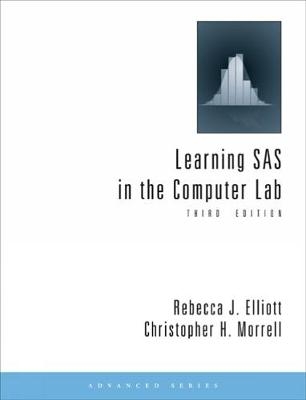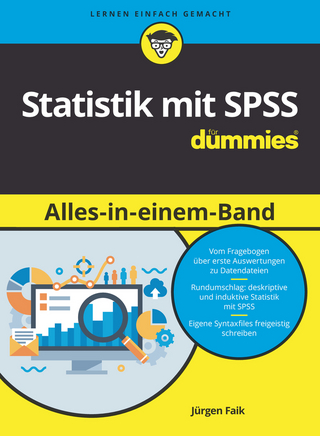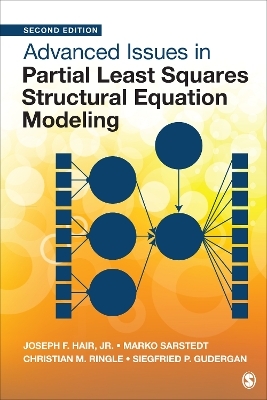
Learning SAS in the Computer Lab
Brooks/Cole (Verlag)
978-0-495-55968-9 (ISBN)
- Titel ist leider vergriffen;
keine Neuauflage - Artikel merken
LEARNING SAS IN THE COMPUTER LAB, 3RD EDITION, gets readers up and running quickly with SAS. Explaining concepts and commands in clear steps, the authors provide SAS basics so students can successfully apply computing techniques in statistics and acquire an appreciation of data analysis. This brief, affordable manual also ensures that readers learn enough about programming with SAS to be able to find their way around the many SAS reference manuals that they will use in their professional activities.
Born in Cape Town, South Africa, Christopher Morrell obtained a bachelor’s degree at the University of Cape Town and a Ph.D. in statistics from the University of Wisconsin-Madison. Since then he has been a member of the Mathematical Sciences Department at Loyola College in Maryland, and teaches various undergraduate statistics courses. In addition, he was chair of the department from 2000 through 2006. Professor Morrell’s research involves statistical models that are used to describe repeated observations from longitudinal studies of aging. His statistical work has appeared in Journal of the American Statistical Association, Biometrics, Technometrics, Journal of the Royal Statistical Society: Series A & C, The American Statistician, Statistics in Medicine, and Communications in Statistics. He is also a co-author (with colleagues from the National Institute on Aging) on research that has appeared in numerous medical journals. Rebecca Elliott has a Masters Degree in Statistics from Purdue University. She began her career with General Motors, supporting Current Product Manufacturing. She moved to Salt Lake City where she taught statistics at the University of Utah and developed the precursor to Learning SAS in the Computer Lab. She spent one year working for a survey research firm. She also provided statistical support through independent consulting. A native Hoosier, she has worked in Indianapolis for the past 10 years in the pharmaceutical industry supporting the manufacture of injectible drugs. Rebecca enjoys hiking in the desert, creating art with fabric, rooting for her team the WNBA Indiana Fever, traveling to sunny spots, and being on a spiritual path. Rebecca Elliott has a Masters Degree in Statistics from Purdue University. She began her career with General Motors, supporting Current Product Manufacturing. She moved to Salt Lake City where she taught statistics at the University of Utah and developed the precursor to Learning SAS in the Computer Lab. She spent one year working for a survey research firm. She also provided statistical support through independent consulting. A native Hoosier, she has worked in Indianapolis for the past 10 years in the pharmaceutical industry supporting the manufacture of injectible drugs. Rebecca enjoys hiking in the desert, creating art with fabric, rooting for her team the WNBA Indiana Fever, traveling to sunny spots, and being on a spiritual path.
1. THE BASICS.
Data Set Structure. Data Steps and PROC Steps. The Data Step. PROC PRINT. The Input Statement. Comparison of Character Formats. SAS Program, Log, and List Files. Problems.
2. MORE SAS BASICS.
Subsetting If. If. . . Then . . . Else Statements. PROC FORMAT. Subsetting Where. Using Data from Outside Files. Missover Option on Infile Statement. PROC IMPORT for Microsoft® Excel Files. PROC SORT. Set Statement. Problems.
3. DATA MANAGEMENT.
How SAS “Thinks.” Lag Function. Drop and Keep Statements. Combining Data Sets. Comment Lines. Limiting the Number of Observations Read from External Files. Setting the Size of the Output. The Put Statement. PROC EXPORT for Microsoft Excel Files. Problems.
4. SAS FUNCTIONS.
Numeric Functions. Character Functions. Probability Functions. Descriptive Statistics Functions. Problems.
5. DESCRIPTIVE STATISTICS I.
Label Statements. Title Statements. PROC UNIVARIATE. PROC BOXPLOT. Problems.
6. PROC GCHART.
PROC GCHART. Problems.
7. DESCRIPTIVE STATISTICS II.
PROC MEANS. PROC FREQ. Problems.
8. GENERATING RANDOM OBSERVATIONS.
SAS Distributional Functions. Do Loops. Problems.
9. X-Y PLOTS.
PROC GPLOT. Problems.
10. ONE-SAMPLE TESTS FOR µ, P.
One-Sample t-Tests. One-Sample Test for P. Problems.
11. TWO-SAMPLE T-TESTS.
PROC TTEST. T-Tests: Two-Sample, Pooled, and Paired. Problems.
12. ONE-WAY ANOVA.
Analysis of Variance—PROC GLM and PROC ANOVA. Problems.
13. TWO-WAY ANOVA AND MORE.
Two-Way ANOVA. General ANOVA Analysis. Problems.
14. MODEL CHECKING IN ANOVA.
Plots for Model Checking. More on PROC GLM. Problems.
15. CORRELATIONS.
PROC CORR. Problems.
16. SIMPLE LINEAR REGRESSION
PROC REG. Problems.
17. MODEL CHECKING IN REGRESSION.
Plots for Model Checking. More on PROC REG. Problems.
18. MULTIPLE LINEAR REGRESSION.
Multiple Regression. Problems.
19. MULTIPLE REGRESSION: AIDS FOR SELECTING AND ASSESSING MODELS.
Statistics Used in Multiple Regression Model Checking. PROC REG Selection = Option. Problems.
20. TESTS FOR CATEGORICAL DATA.
Chi-Square Tests. Problems.
21. NONPARAMETRIC TESTS.
One-Sample Tests. Tests for Two or More Samples. Problems.
22. ANALYSIS OF COVARIANCE.
Using PROC GLM for ANCOVA. Problems.
23. LOGISTIC REGRESSION
PROC LOGISTIC. Problems.
24. MATRIX COMPUTATIONS.
PROC IML. Problems.
25. MACRO VARIABLES AND PROGRAMS.
Macro Variables. Macro Programs. Problems.
DESCRIPTION OF DATA SETS.
INDEX.
| Erscheint lt. Verlag | 1.6.2009 |
|---|---|
| Verlagsort | CA |
| Sprache | englisch |
| Maße | 189 x 235 mm |
| Gewicht | 502 g |
| Themenwelt | Mathematik / Informatik ► Mathematik ► Computerprogramme / Computeralgebra |
| Mathematik / Informatik ► Mathematik ► Wahrscheinlichkeit / Kombinatorik | |
| ISBN-10 | 0-495-55968-7 / 0495559687 |
| ISBN-13 | 978-0-495-55968-9 / 9780495559689 |
| Zustand | Neuware |
| Informationen gemäß Produktsicherheitsverordnung (GPSR) | |
| Haben Sie eine Frage zum Produkt? |
aus dem Bereich


